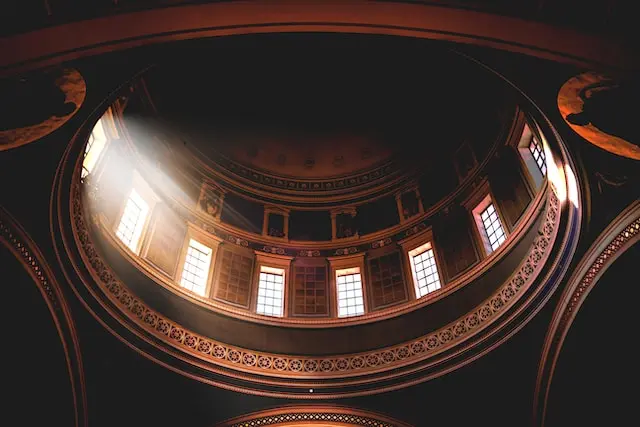Please tour a world where architecture is a story about history and craftsmanship. With its intricate designs and symbolic elements, Ottonian architecture offers a glimpse into medieval artistic prowess. In this, we will discuss the mesmerizing world of arcades in Ottonian architecture, exploring their significance, design features, and lasting influence on architectural styles through the ages.
The Role of the Arcade in Ottonian Architecture
Arcades are more than just architectural elements; they act as functional and aesthetic components, creating rhythm and depth within the design. Arcades in Ottonian architecture provide structural support to buildings while also offering a visually captivating experience for those who gaze upon them. These covered walkways or passageways connect different parts of a structure and serve as transitional spaces that enhance the overall spatial composition. The repetition of arches in arcades adds a sense of rhythm and harmony to the architectural ensemble, drawing attention to both vertical and horizontal planes. The interplay between light and shadow further accentuates the beauty and intricacy of these arcades, creating a dynamic visual impact that captures the essence of Ottonian design philosophy. Incorporating arcades into their architectural creations allowed Ottonian builders to showcase their skillful craftsmanship while imbuing each structure with symbolic significance and cultural meaning. Through intricate detailing and thoughtful placement, these arcades became more than just architectural features—they became symbols of power, faith, and artistic expression woven into the fabric of each tower.
Key Features and Characteristics of Arcade Design
Arcades are distinguished by a series of arches supported by columns or piers, creating a visually striking element that adds depth and rhythm to the structure. One key feature of arcade design is its repetitive nature, with multiple arches lined up in succession along a wall or corridor. This repetition creates a sense of continuity and emphasizes the horizontal plane, contributing to the overall harmony of the architectural composition. Arcades often serve as transitional spaces connecting different areas within a building or leading from one space to another. They can act as passageways for movement while also providing shade and shelter from the elements. Arcades in Ottonian architecture reflect functional and aesthetic considerations, showcasing intricate craftsmanship and attention to detail in every arch and column.
Examples of Notable Arcades in Ottonian Architecture
One notable arcade can be found in the Abbey Church of Saint Michael in Hildesheim, Germany. A series of rounded arches supported by columns create a sense of grandeur and harmony. Another remarkable example is the west work at Corvey Abbey, featuring intricately carved stone arcades that showcase the craftsmanship and attention to detail prevalent during the Ottonian era. Moving east, one encounters the impressive Cathedral of Saint Peter in Regensburg, where a stunning arcade runs along its exterior façade. The rhythmic repetition of arches adds a sense of rhythm and symmetry to this architectural marvel. These examples demonstrate the technical skill of Ottonian architects and highlight their dedication to creating spaces that inspire awe and reverence.
Symbolism and Meaning Behind the Use of Arcades
One must recognize the symbolism and meaning woven into the intricate design of arcades in Ottonian architecture. These architectural elements serve more than just a structural purpose; they are laden with symbolism that reflects the spiritual beliefs and values of the time. The arcade, with its series of arches supported by columns or piers, symbolizes a connection between earth and heaven, bridging the gap between mortal life and divine realms. The repetition of arches conveys a sense of rhythm and harmony, reflecting a belief in order and balance within the universe. Arcades were often used to delineate sacred spaces within churches or monasteries, emphasizing their importance as areas for prayer and reflection. The play of light and shadow created by arcades added depth and mystery to these sacred spaces, enhancing the spiritual experience for worshippers.
Ottonian Arcades and Later Architectural Styles
The intricate arcades of Ottonian architecture have left a lasting legacy that transcends time. As architectural styles evolved over the centuries, elements of Ottonian design continued to influence and inspire new creations. The use of arcades in later architectural styles can be seen in various forms, from Romanesque to Gothic to Renaissance buildings. The structural elegance and symbolic significance embedded in Ottonian arcades paved the way for innovative approaches to architectural design. These graceful arches not only provided structural support but also served as aesthetic embellishments, creating visually stunning spaces that captivated onlookers. As architects experimented with different techniques and materials, the essence of the arcade persisted throughout history, showcasing a timeless appeal that continues to resonate with modern designers. The legacy of Ottonian arcades lives on in the magnificent cathedrals, palaces, and public buildings around the world, serving as a testament to the enduring impact of this remarkable architectural style. Incorporating elements inspired by Ottonian arcades into contemporary designs pays homage to a rich cultural heritage while pushing boundaries toward new creative heights. By embracing the intricacies of these archaic structures, architects today can forge connections between traditions and future innovations, creating spaces rooted in history and forward-thinking in their vision.





